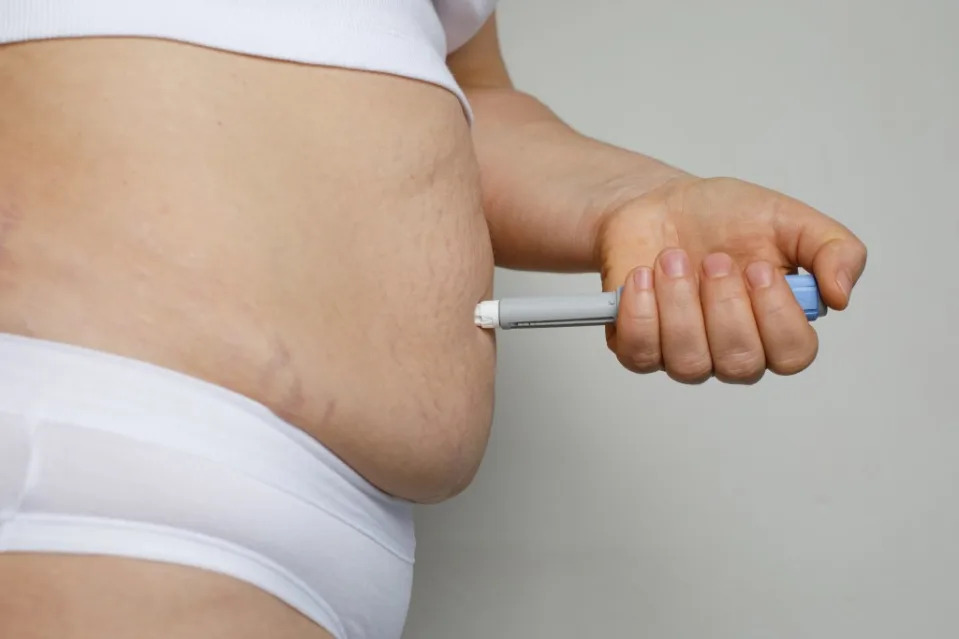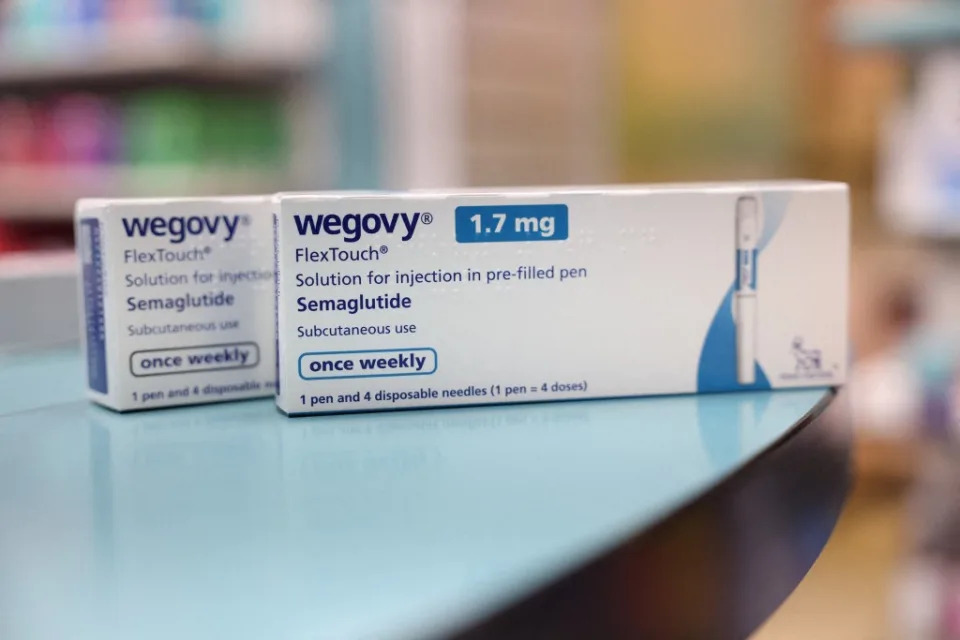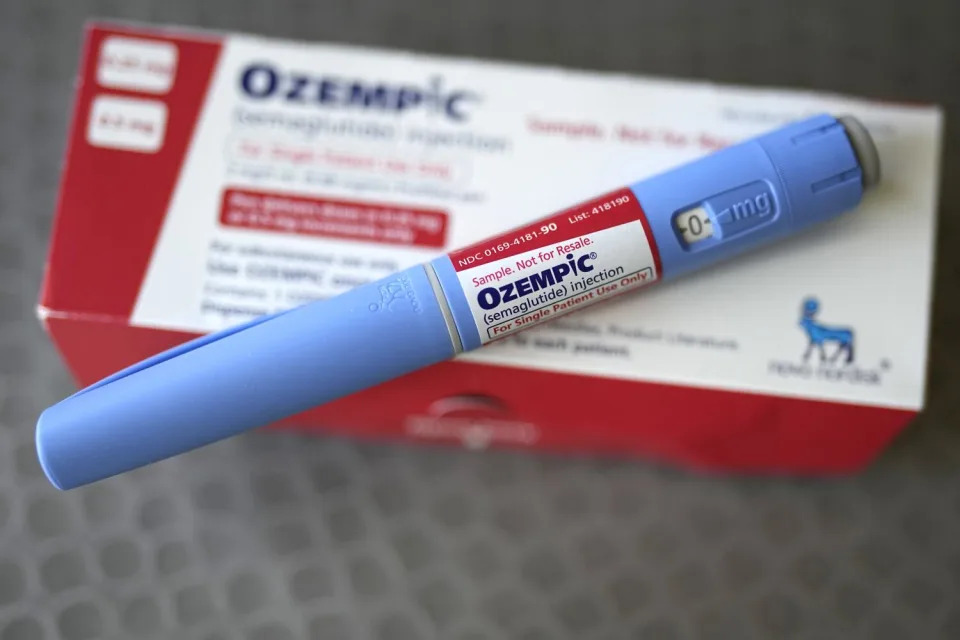The Washington Post
Schools that never needed AC are now overheating. Fixes will cost billions.
Anna Phillips and Veronica Penney – May 24, 2024


Nearly 40 percent of schools in the United States were built before the 1970s, when temperatures were cooler and fewer buildings needed air conditioning.
That has changed. In recent decades, heat has crept northward, increasing the number of school days with temperatures above 80 degrees Fahrenheit.
Large parts of the country, where temperatures were previously cooler, now experience at least one month of school days with temperatures above 80 degrees Fahrenheit. Many schools still don’t have air conditioning.
America’s aging school buildings are on a collision course with a rapidly warming climate.
Last fall, school officials were forced to send students home across the Northeast and the Mid-Atlantic – just as many were returning from summer break – because of extreme heat and schools lacking air conditioning. In Baltimore and Detroit, high heat led to early dismissals, the same as it had four months earlier when summer temperatures struck in May.
In Philadelphia last year, administrators moved the first day of school from late August to after Labor Day, in part to avoid a repeat of heat-related school closures in previous years. But the weather didn’t cooperate. They ended up closing more than 70 schools three hours earlier than usual for the entire week.
Hot weather is not a new concern for school districts. But as the burning of fossil fuels heats the planet, it’s delivering longer-lasting, more dangerous heat waves, and higher average temperatures. Across much of the northern United States, where many schools were built without air conditioning, districts are now forced to confront the academic and health risks posed by poorly cooled schools. Fixing the problem often requires residents to pass multimillion dollar school repair bonds, which can be hard to do. Climatic change is arriving faster than most can adapt.
“We have had situations where it’s been 88 degrees outside but the real feel in the classrooms is well over 90 degrees because of the humidity,” said Shari Obrenski, president of the Cleveland Teachers Union. Although most of the district’s schools have air conditioning, 11 switched to virtual instruction during a period of high heat in 2022. “It’s miserable,” she said, “students throwing up, not being able to keep their heads up, just horrible conditions.”
Because of the highly localized nature of U.S. public schools, data on school air conditioning is scarce and researchers rely on surveys to gather information.
In 2021, when the environmental advocacy group Center for Climate Integrity set out to examine air conditioning, its researchers collected information on more than 150 schools and school districts across the country. They found that in places where temperatures historically hit 80 degrees Fahrenheit at least 32 days during the academic year, the vast majority of schools already had air conditioning.
Using this as their threshold for when AC is needed, they modeled what it would cost to keep schools cool in the near future under a moderate warming scenario. Their answer: more than 13,700 public schools in the United States that did not need air conditioning in 1970 need it today. Some have already installed it, some are working on it now and some can only dream of having enough money. The estimated cost of this huge investment exceeds $40 billion.
Paul Chinowsky, a professor emeritus of engineering at the University of Colorado at Boulder who led the analysis, said it showed two distinct trends in America: Northern school districts experiencing hotter school year temperatures that are overheating classrooms and forcing closures, especially in old buildings without enough electrical capacity to run air conditioners. And Southern districts with aging cooling systems outmatched by abnormally hot weather.
A generation ago, few would have imagined that school districts from Denver to Boston would need to spend millions of dollars on cooling. Today, the reality is different.
Aging schools, built for a different climate
The scene at Dunbar Elementary was so distressing that, six years later, it is still fresh in Jerry Jordan’s mind.
In late August 2018, a punishing heat wave gripped Philadelphia just as public school students were returning from summer break. Jordan, the president of the local teachers union, was holding a news conference at Dunbar to demand the state help pay to air-condition schools. Before the event, he walked through the building to get a feel for what its students and staff were experiencing.
“I ran into one teacher as she was walking her first-grade class down to computer science – she was wearing a dress and the back of the dress was literally soaked right through. It was sticking to her,” Jordan said. A little boy got out of line and lay down on the concrete floor. He stayed put, even when the teacher urged him to rejoin the class. “But it’s cool here,” Jordan remembers him pleading.
Today, roughly 30 percent of Philadelphia public schools don’t have fully air-conditioned classrooms, according to district officials. In interviews, teachers said many more buildings don’t have cooling in gyms, cafeterias and libraries. The district has made progress since that 2018 heat wave, thanks in large part to millions of dollars in federal pandemic aid and a $200,000 donation from Philadelphia Eagles quarterback Jalen Hurts. But it still has many buildings with only enough power to support window AC units in every other classroom, or on certain floors. Some units are broken or barely functional. At one school, parents said the units are window dressing – they can’t be switched on for fear of using more electricity than the building can safely handle.
The district’s goal is to have all classrooms air-conditioned by 2027, but its pandemic money is about to run out and state funding remains uncertain. “The aspirational is absolutely dependent on funding,” said Superintendent Tony Watlington Sr.
In interviews, teachers said that classroom temperatures have climbed into the high 80s to low 90s in the early fall, past the point when studies have shown heat can impede learning.
“94 degrees F in my classroom today,” teacher Trey Smith wrote on X, formerly Twitter, on a day in late August, posting a photo of a thermometer in his third-floor un-air-conditioned classroom at Marian Anderson Neighborhood Academy. Smith said that, for years, he has had to endure high temperatures with only fans and a portable AC unit that trips the circuit breaker.
“I’m angry,” he said. “Not at the district and not at my administration, it’s just that as a state we’ve underfunded our schools. That’s the crime.”
As hotter-than-normal temperatures become more common in the late spring and early fall, they pose a risk to students’ academic success. Researchers have linked heat exposure to reduced learning, in addition to a range of well-known health effects such as dizziness, headaches and worsening asthma symptoms. Teachers aren’t immune either – especially in places that aren’t used to hot weather.
“On those really really hot days, our attendance is low because kids don’t want to boil in a classroom and asthmatic kids are being kept home by their parents,” said Olney High School teacher Sarah Apt, who also has asthma. “Those are days I have used my inhaler and kind of take it slower.”
Climate change is expanding the swath of the country facing these problems.
At the same time, as school shootings become more frequent, district leaders are under pressure to turn their buildings into fortresses to stop an attacker.
“We’ve got schools that want to button up for security reasons, but that’s making them hotter, stuffier and requiring more mechanical air conditioning,” said Chinowsky. “You’ve got two different goals working against each other.”
Well-off school districts often address this problem by putting a bond before voters, asking them to support higher taxes to pay for cooling. But despite its improving poverty rate, Philadelphia is still the poorest big city in the nation. And a quirk in state law bars the school district from raising its own revenue, leaving it few options but to ask the city and state for money. That hasn’t worked out so well – last year, a state court found that Pennsylvania’s funding formula leaves some schools so underfunded that it violates students’ constitutional right to an education.
Parents and teachers have become increasingly vocal in demanding healthier conditions following scandals over asbestos and lead contamination in schools. The teachers union now employs a director of environmental science and commissioned an app that allows teachers to report extreme temperature problems, as well as leaks and pest infestations.
Yet some families don’t know their children attend schools without air conditioning.
Sherice Workman was among them. When she chose Paul Robeson High School in West Philadelphia for her youngest son, Juelz, she was unaware how hot it was inside until he began bringing deodorant to school to mask his constant sweating. He came home with stories of students sleeping through class to deal with the heat. She and some of the school’s staff delivered a petition to district leaders two years ago.
“When it is 80 degrees outside, it is 90 to 100 in the classrooms. When it is 90 degrees outside, it is 100 to 105 degrees in the classrooms,” the petition read. “This extreme heat in our building has caused our children to pass out and miss classes due to dehydration-related headaches.”
The district installed window air conditioners at Robeson the next year, an experience that Workman said taught her the value of speaking out. When it comes to air conditioning in neighboring suburbs’ schools, she said, “It’s just something they have. Our fight isn’t their fight.
Hotter school days and no cheap fixes
Fall in Colorado’s Front Range can be glorious – with blue skies and aspens changing color in the Rockies. But it is also the time of year when Colorado has experienced its greatest warming, with temperatures rising by 3.1 degrees Fahrenheit from 1980-2022, according to a state report.
That’s when kids are in class. In the northern Colorado city of Fort Collins, classroom temperatures in some buildings reach upward of 90 degrees when the school year starts in mid-August, said middle school social studies teacher Jacque Kinnick, and the heat is lasting longer in the season.
“I used to need sweaters,” in October said Kinnick. “Now, I wear short sleeves.”
Kinnick said one of her colleagues compared the test scores of students in her morning and afternoon classes and found that the children performed worse later in the day, when the heat was highest.
“It’s like you can actually see kids just wilting,” she said. “They’re sweating, they’re laying their heads on the desk.”
University of Pennsylvania economist R. Jisung Park has studied the effect of rising temperatures on students. He found that, even when other factors are controlled for, students who are exposed to days in the 80s and 90s perform worse on standardized tests. His research also suggests that, in the United States, heat has a greater effect on Black and Latino students, who are less likely to have air conditioning at school or home.
The effect may not be noticeable at first – a one-degree hotter school year is linked to learning loss of about one percent – but the damage accumulates and the impact is likely underestimated. A federal analysis published last year noted that while these losses only account for students’ exposure to hot days during high school, newer research suggests heat experienced by elementary and middle school students also impedes learning.
Some of the coldest parts of the country will eventually have to face overheating schools, too. The federal study found that at the 2 degrees Celsius threshold, the states with the highest projected learning losses per student, because of low AC coverage in schools, will be Maine, Michigan, New Hampshire, Vermont and Wyoming.
Heat also affects students’ well-being. It increases ozone pollution in cities, extends the pollen season, worsens asthma symptoms and can exacerbate a host of other medical conditions, forcing students to leave their classes in search of relief. Children become dehydrated easily and turn woozy and irritable. After sitting in a hot classroom all day, they may struggle to play sports or participate in after-school activities.
Schools along the Front Range have historically counted on the region’s overnight low temperatures to cool off their buildings. But as climate change causes nights to warm faster than days, such methods are proving ineffective.
Jeff Connell, chief operations officer of the Poudre School District, which is centered in Fort Collins and includes surrounding towns, said the district recorded temperatures between 85 and 90.5 degrees in an elementary school classroom last fall. Poudre’s leaders have discussed postponing the start of school, but with extreme daily highs becoming more common, “it’s harder to know with certainty that if we move the calendar, we’ll avoid the hot days,” said Connell.
Fort Collins exemplifies two trends that confront public education as climate change intensifies. Heat is one problem – in part because urban schools are often ringed by heat-reflecting asphalt parking lots and playgrounds.
Demographics are another. Since funding is tied to enrollment, some school districts face budget crises as their student populations shrink – yet they need more money for air conditioning projects to keep their schools habitable.
Fort Collins’ affordability and easy access to the mountains has long-fueled the city’s growth. But the increasing number of high heat days has put a strain on teachers and students as enrollment is beginning to decline, prompting the school district to consider closing schools. Poudre has a $700 million deferred maintenance backlog. Last year, an assessment of how much it would cost to fully air-condition 36 school buildings came in at more than $200 million – money the district does not have.
The city is hardly an outlier.
In 2020, the Government Accountability Office found that an estimated 41 percent of school districts surveyed needed to replace or update their HVAC systems in at least half of their schools. But the report also found that roughly 40 percent of districts rely on state money for large-scale facilities improvements and don’t have the capacity to issue bonds or raise property taxes.
Persuading school board members and voters to fund air conditioning in schools can be a tough sell. This is an acute problem in Southern school districts where cooling was installed decades ago, but is now breaking down from near-constant use, Chinowsky said.
“The people making these decisions have a tendency to say, ‘We dealt with it when we were in school,’ Or, ‘It’s only hot for a couple of days,’” Chinowsky said. “And the fact is that’s not really the truth anymore.”
Often, the states aren’t coming to districts’ aid. Neither is the federal government. Advocates for more school funding said the Federal Emergency Management Agency, which rebuilds schools once they’re destroyed, is the biggest source of government money.
Decades of planning help keep classrooms cool
Some communities have more latitude to address the problem.
In Denver, about an hour south of Fort Collins, school officials have slowly been preparing their buildings for a hotter world. It began a decade ago with simple measures such as blinds and nighttime cooling. But as the years progressed and nights didn’t cool off like they once did, officials decided they were going to have to install air conditioning. The district began prioritizing retrofits based on factors such as student poverty levels and disabilities, the age and condition of the buildings and indoor temperatures.
Denver residents have approved multiple bond measures to pay for the upgrades and they may be asked to vote on one again soon. The district expects that 30 schools still won’t be fully air-conditioned by the end of the year. Fixing them will cost an estimated $290 million.
“The voters have been pretty receptive,” said Trena Marsal, chief operating officer of Denver Public Schools. “We’ve heard from our teachers, from our community members and our parents that the classrooms are hot.”
Among the districts where voters have agreed to support facilities bonds, some have used the money to not only air-condition their classrooms, but to also electrify their heating and cooling systems with air source or geothermal heat pumps. In St. Paul, Minn., the school district has finished installing a geothermal system at one of its high schools, where heat is pumped out of the building during the summer, transferred to water and stored deep underground in pipes. That heated water is pumped back into the buildings in winter to warm them.
Some of these systems can qualify for major federal subsidies. Yet to the chagrin of environmentalists, large school districts in cities such as New York City, Boston and Philadelphia are buying thousands of window units, which gobble up electricity and break down easily.
“They’re a maintenance nightmare. They’re an operating cost nightmare,” said Sara Ross, co-founder of the group UndauntedK12, which advocates for green building improvements in schools. “The decision to use window units is only going to worsen these districts’ challenges in terms of their emissions because they’re using much more energy.”
The picture in selected areas
Philadelphia: 3.7°F warmer since 1970
197,115 students enrolled
67 out of 218 schools are not fully air-conditioned.
By 2025, students will experience 22 more days with temperatures above 80°F. In 1970, 28 days were above 80°F. In 2025, it is predicted that 50 days will be above 80°F.
Fort Collins, Colo.: 3.4°F warmer since 1970
29,914 students enrolled
36 out of 49 schools are not fully air-conditioned.
By 2025, students will experience 17 more days with temperatures above 80°F. In 1970, 25 days were above 80°F. In 2025, it is predicted that 42 days will be above 80°F.
Denver: 1.3°F warmer since 1970
89,235 students enrolled
37 out of 207 schools are not fully air-conditioned.
By 2025, students will experience 18 more days with temperatures above 80°F. In 1970, 32 days were above 80°F. In 2025, it is predicted that 50 days will be above 80°F.
About this story
Sources: Resilient Analytics and the Center for Climate Integrity (hot school days); NOAA Regional Climate Centers via the Applied Climate Information System (temperature trends); Denver Public Schools.
The Post used data from Resilient Analytics and the Center for Climate Integrity that estimates the increase in hot school days by 2025 using downscaled climate projections for North America from CMIP5. The gridded data has a resolution of 3.7 miles. To calculate the increase in hot days by 2025, researchers used the middle-of-the-road RCP 4.5 scenario.
There are some U.S. counties where varying terrain affects county-level temperature projections. Monroe County, Fla. – just west of Miami-Dade – includes mainland, coasts and islands. The varied terrain creates microclimates that make county-level averages cooler than neighboring counties, even if mainland areas of the county remain very hot.
School years days were defined separately for each state using the 2018-2019 school year calendar for the state’s largest school district. Charter schools are not included in the analysis.
To determine the increase in average temperature for each school district, The Post used station temperature records from NOAA Regional Climate Centers via the Applied Climate Information System. Maximum temperature records for 1970-2023 were analyzed using a linear regression to determine the average rate of warming over the time period. Days with missing temperature measurements were excluded.
Related Content
Fentanyl is fueling a record number of youth drug deaths
In a place with a history of hate, an unlikely fight against GOP extremism
Life in Taiwan is rowdy and proud, never mind China’s threats
























